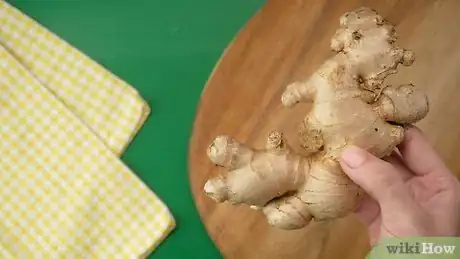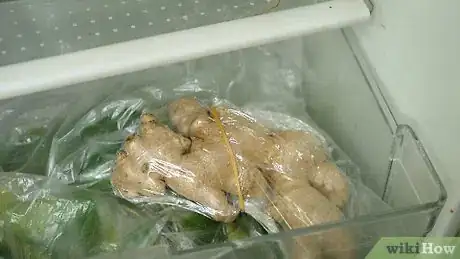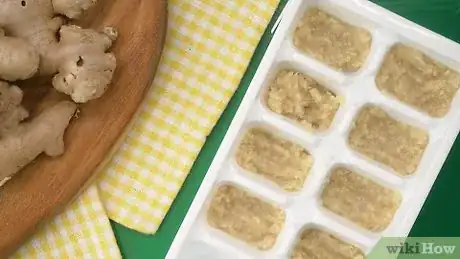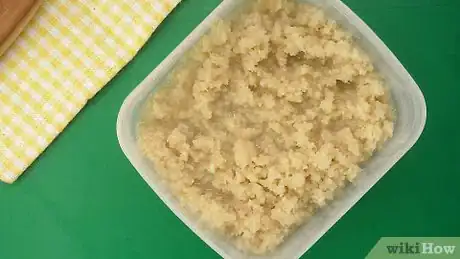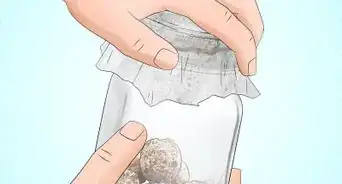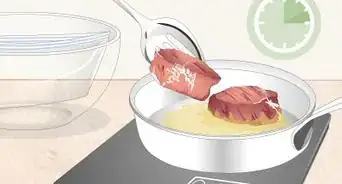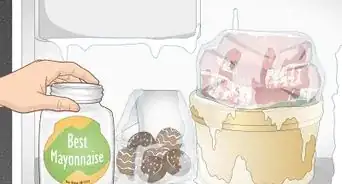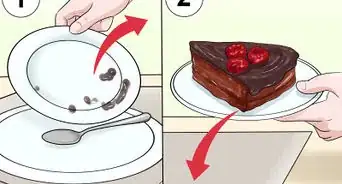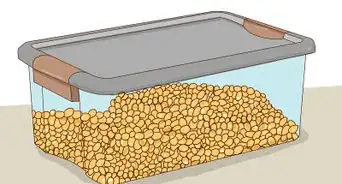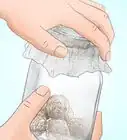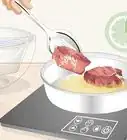This article was co-authored by wikiHow staff writer, Christopher M. Osborne, PhD. Christopher Osborne has been a wikiHow Content Creator since 2015. He is also a historian who holds a PhD from The University of Notre Dame and has taught at universities in and around Pittsburgh, PA. His scholarly publications and presentations focus on his research interests in early American history, but Chris also enjoys the challenges and rewards of writing wikiHow articles on a wide range of subjects.
The wikiHow Video Team also followed the article's instructions and verified that they work.
This article has been viewed 26,733 times.
Learn more...
Fresh ginger is an essential ingredient in many recipes, but you may get tired of peeling and grating small amounts of ginger over and over. Instead, you can chop up a much larger amount of ginger, puree it into a paste, and store it in the fridge or freezer for use as needed in recipes. Once you have fresh ginger ready-to-go, you’ll be using it in everything from sushi to ice cream to cocktails!
Ingredients
- 1 c (225 g) ginger, peeled and coarsely chopped
- 0.25–0.5 c (59–118 mL) water
- 1 tsp (5 g) citric acid powder (optional)
- 2 US tbsp (30 mL) vegetable oil (optional)
Steps
Choosing and Chopping Ginger
-
1Pick hands of ginger that are firm and have smooth skin. You’ll find ginger at the market in oddly-shaped pieces called “hands” (the protruding sections are called “fingers”). Avoid hands that feel light for their size, have wrinkly skin, and are soft to the touch—those ones have lost too much of their water content. Instead, look for hands that have smooth, brown skin, and that feel both heavy for their size and firm to the touch.
- Most people call ginger a root, but it’s actually a rhizome.
-
2Store the ginger in the fridge until you’re ready to use it. Wrap the ginger loosely in plastic wrap and place a rubber band over it, or put it in a zip-close bag with the zipper kept partly open. Stash it in the vegetable drawer of your refrigerator for up to 1 week before using it.
- The ginger will go bad more quickly if you seal it up tight.
- Even if the ginger hasn’t gotten moldy or mushy after a week, it will start to lose the brightness of its flavor quickly.
Advertisement -
3Wash and peel the ginger. If you’re not using the whole hand, cut or snap off a finger or two of the ginger. Rinse it under running water and rub off any dirt, then dry it with paper towels. Peel off the skin with a vegetable peeler or a paring knife.
- Work carefully with the peeler or paring knife—they’re sharp!
- If the ginger has thin, smooth skin, you don’t necessarily have to peel it. However, peeling it may make your ginger paste come out a little bit smoother.
-
4Chop the ginger coarsely and measure out 1 c (225 g). Use a sharp knife to cut up the ginger. The pieces don’t have to be uniform in size, but try to make them no more than 0.25 in (6.4 mm) thick. Keep chopping until you have your desired amount.
- If you’ve cleaned and peeled too much ginger, simply double the recipe to 2 c (450 g)!
Creating a Smooth Paste
-
1Add 0.25 c (59 mL) of water to a blender or food processor. Use room temperature or cold water. You may need up to 0.5 c (120 mL) to make a paste out of 1 c (225 g) of chopped ginger, so be ready to add more water as needed while you work.[1]
- Adding the water first makes the pureeing go a little faster.
-
2Add the ginger and, if desired, oil or citric acid as a preservative. If you want to ensure the full flavor profile of the ginger, don’t use anything but it and water to make your paste. However, the paste will last longer in the fridge or freezer if you add either 2 US tbsp (30 mL) of vegetable oil or 1 tsp (5 g) of citric acid.[2]
- You’ll find citric acid in powdered form at health stores and many grocery stores.
- These preservatives will extend the storage time in the fridge from about 1 week to 1 month, and in the freezer from 1 month to 3 months.
- You can add both vegetable oil and citric acid, but this won’t further extend the storage time.
-
3Puree the mixture until it forms a smooth paste. Depending on your blender or food processor, you may need to occasionally scrape down the inside of the container with a silicone spatula to help fully incorporate the chunks of ginger. You can also add up to 0.25 c (59 mL) of additional water as needed to help break down the ginger pieces. Stop pureeing when the entire mixture has a consistent, slightly lumpy texture.
- In regards to consistency, the mixture should look more like grits than oatmeal.
Storing the Ginger Paste
-
1Keep the puree in a tightly sealed container in the fridge or freezer. Immediately transfer your puree to one or more containers with tight-fitting lids, then stash it in the refrigerator or freezer. Without any added preservatives, the paste will keep in the fridge for 1 week and in the freezer for 1 month.
- If you added vegetable oil or citric acid to the paste, it should keep for up to 1 month in the fridge and up to 3 months in the freezer.
-
2Use ice cube trays to freeze mini-doses of paste instead. If you consistently use the same amount of ginger paste in your go-to recipes, you can freeze pre-measured amounts by using ice cube trays. Spoon your preferred amount—up to 1 US tbsp (15 mL)—into each cup in an ice cube tray, then freeze the paste solid. After that, pop out the ginger paste cubes and store them in a labeled zip-close freezer bag.[3]
- This way, you can grab just the amount you need while you’re cooking without having to measure!
-
3Use the paste chilled, frozen, or slightly thawed. Refrigerated ginger paste can be added as-is to any recipe. You can also add frozen cubes straight to a skillet. However, if you’re using frozen cubes for baking, thaw them for 5-10 minutes on the counter first—by then, they should be softened enough to incorporate into your batter or mix.[4]
- You can substitute ginger paste for fresh grated ginger at an equal ratio. If your recipe calls for a length of ginger—for instance, a “1-inch finger”—use 1 tsp (4.9 mL) of paste per 1 inch.
References
About This Article
Fresh ginger paste makes a delicious addition to all sorts of dishes. To make it, wash a fresh ginger root and peel off the skin with a vegetable peeler. Next, chop the peeled ginger into small pieces with a sharp knife. Measure out 1 cup of the chopped pieces and add them to a blender or food processor with about a quarter of a cup of water. If you like, you can add 2 tablespoons of vegetable oil or a teaspoon of citric acid to help the paste last longer. Blend the ginger on the puree setting until it forms a smooth paste, adding small amounts of water as needed to get the consistency you want. To learn how to store your ginger paste, read on!
